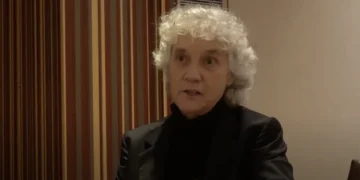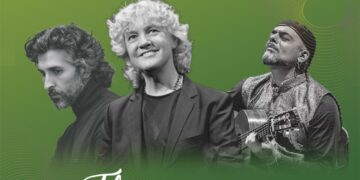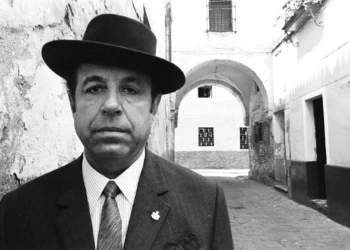|
50 Festival Internacional de
|
|
Special 50 Festival Internacional del Cante de las Minas. Text: Estela Zatania As singer Torta declared the last time he came to this festival, “There’s strength in Union”, and everything continues to go strong at this celebration of La Unión’s half-century of continuity currently being honored. Saturday’s cultural program included the presentation of the book “4 Esquinas” by author Asencio Saez, and a conference by Juan Vergillos in which he offered various impressions and observations related to the artistic personality of Enrique Morente who was sitting in the first row, and would then receive the Castillete de Oro award of the festival. At eleven in the evening, an excellent double program was offered at the Catedral de Cante. Catalonian by birth, with a father from Málaga and mother from Cartagena, Mayte Martín not only won the coveted Lámpara Minera in 1987 at the age of 22, but made her professional debut on this same stage at the age of 12 according to emcee Juan Ramón Lucas. One of the most beloved figures in La Unión, Mayte has since returned on several occasions since that triumph. With the magnificent guitarist Juan Ramón Caro, the singer opened straightaway with peteneras, with the beautiful subtlety and shading that was to be the earmark of the entire recital. She dedicated her cante to the Fernández dynasty of La Unión, Antonio, Encarnación and Rosendo, and then sang malagueñas of Peñaranda and Chacón, ending with rondeña and fandango of Frasquito. This woman’s command and precision are never “obstacles” to her moving interpretations. With this type of sweet melismatic singing, there is always the dancer of falling into excesses and over-the-top sentimentality, but with Martín, technique is always at the service of art because her intelligence and good taste make anything else impossible. She recreated the same cantes that led two decades ago to her winning the Lámpara Minera – minera, cartagenera and taranta – claiming she hasn’t sung them since then. When she gets into a surprising assortment of rhythmic fandangos of Huelva, Alosno and other sources, you begin to realize you are witnessing one of the best recitals the singer has offered in recent years when she diverged from the flamenco path to interpret original compositions with verses from famous poets. Last night she returned to the fold, and with an apt repertoire. She dusted off garrotín, another cante that benefits from her exquisitely delicate delivery. The same sensitivity counselled a delightful old-style guajira that was dedicated to the memory of Juan Valderrama. These cantes no longer have the bad press of years ago, and it’s time they assume their rightful place in the repertoire of flamenco singing. With bulerías, never has such an aggressive form been sung so sweetly, but without turning saccharine. A medley of the most classic cuplé was the end of a recital I would dare to call “perfect”, although the audience didn’t quite seem to connect with the subtely of Mayte Martín who doesn’t employ technical flourishes to earn applause, but revels in the minimalism she manages so well. Maestro Manolo Sanlúcar offered the second part of this shared recital. He arrived on stage, sat down with his instrument and briefly explained his intention to seek and recreate those moments of his life which had inspired the respective pieces. The first interpretation was a well-known theme from his brilliant recording Tauromagia, with an added prelude. The rest of the program was a was series of musical compositions characterized by their beautiful harmony and the sweet sound Sanlúcar gets out of his guitar. For the overall music-lover, it was a banquet of lovely sounds with an Andalusian flavor. But the flamenco fan is typically looking for more. You want to see and hear how a guitarist and musician of this level of knowledge and accomplishment travels through the compás of a traditional soleá or resolves a granaína, situates alegrías or deals with the potential depth of a siguiriya. In this sense, and despite the best efforts of second guitar David Carmona, interesting young singer Carmen Molina and the discreet percussion of Agustín Díaz, there just wasn’t anything to grab onto, and the apparent uniformity of the music could have been alleviated with the contrast of any of a number of pieces from the guitarist’s vast recorded repertoire. In the wee hours, the first Noche Blanca del Flamenco was held under the auspices of the festival with free recitals until dawn with singers Encarnación Fernández, el Niño de Elche and Bastián, with the guitar accompaniment of Antonio Muñoz and Rosendo Fernández. More information: |


























